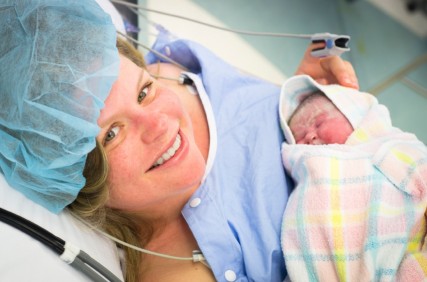The natural childbirth industry is second to none in its mastery of marketing. Several years ago, ICAN (International Cesarean Awareness Network) designated April as Cesarean Awareness month (CAM). That sounds ever so much better than Cesarean Defamation Month, which would be far more accurate.
As a result, we will be treated with a month of posts from the natural childbirth industry bemoaning the C-section rate, bewailing a “crisis” in maternity care, and aggressively decrying the rare complications of C-section while ignoring the major benefits. The natural childbirth industry promotes awareness of the risks of C-sections, and utterly ignores the benefits that dramatically outweigh those risks.
The truth is that C-sections have saved literally millions of lives and continue to save tens of thousands of mothers and babies in the US alone each and every year. Therefore, I am designating April Cesarean Appreciation Month in honor of the incredible benefits of C-sections.
In 2006 Dr. Atul Gawande wrote a piece for The New Yorker, The Score, that uses the Apgar score as a focus for a review of the history of contemporary obstetric care.
Gawande starts by acknowledging that for most of human existence, childbirth was the leading cause of death of young women and the leading cause of death of babies. The risks are legion, from hemorrhage, to infection to obstructed labor, when a baby is too big to fit through the maternal pelvis.
The natural childbirth industry would have you believe that these complications are rare, but in fact, they are so common that midwives and doctors invented tools to cope with them.
The first reliably life-saving invention for mothers was called a crochet, or, in another variation, a cranioclast: a sharp-pointed instrument, often with clawlike hooks, which birth attendants used in desperate situations to perforate and crush a fetus’s skull, extract the fetus, and save the mother’s life.
If only the baby could be removed healthy and whole from the mother’s uterus:
But Cesarean section on a living mother was considered criminal for much of history, because it almost always killed the mother—through hemorrhage and infection—and her life took precedence over that of the child… Only after the development of anesthesia and antisepsis, in the nineteenth century, and, in the early twentieth century, of a double-layer suturing technique that could stop an opened uterus from hemorrhaging, did Cesarean section become a tenable option.
The C-section was part of the transformation of modern obstetrics:
In the United States today, a full-term baby dies in just one out of five hundred childbirths, and a mother dies in one in ten thousand. If the statistics of 1940 had persisted, fifteen thousand mothers would have died last year (instead of fewer than five hundred)—and a hundred and twenty thousand newborns (instead of one-sixth that number).
And the statistics from the 1940’s were far better than those that occur in nature. If the statistics of pre-history had persisted, 40,000 mothers and 280,000 babies would have died last year.
As Gawande notes:
… [A]lmost nothing else in medicine has saved lives on the scale that obstetrics has.
In large part, that’s a result of the liberal use of C-sections.
A measure of how safe Cesareans have become is that there is ferocious but genuine debate about whether a mother in the thirty-ninth week of pregnancy with no special risks should be offered a Cesarean delivery as an alternative to waiting for labor…
…Many argue that the results for mothers are safe, too. Scheduled C-sections are certainly far less risky than emergency C-sections-procedures done quickly, in dire circumstances, for mothers and babies already in distress. One recent American study has raised concerns about the safety of scheduled C-sections, but two studies, one in Britain and one in Israel, actually found scheduled C-sections to have lower maternal mortality than vaginal delivery. Mothers who undergo planned C-sections may also (though this remains largely speculation) have fewer problems later in life with incontinence and uterine prolapse.
Of course, C-sections, like any surgical procedure, have complications. These include infection, bleeding, need for future C-sections, and risk of rare complications in future pregnancies like placenta accreta, where the placenta grows into the wall of the uterus at the location of the scar. Accreta is dangerous and can lead to hysterectomy and even death of the mother.
On balance, though, the benefits of C-sections dramatically outweigh the risks. That’s why April should be Cesarean Appreciation Month, in acknowledgement of the many millions of lives save by this simple surgery. It has transformed childbirth from an opportunity for women to make their wills and prepare for possible death into an opportunity to complain about having a C-section.


